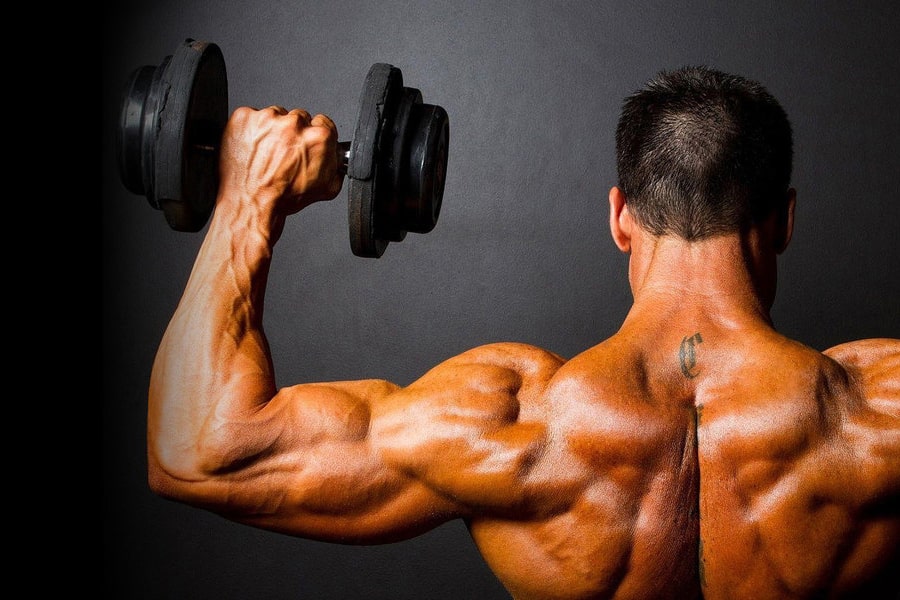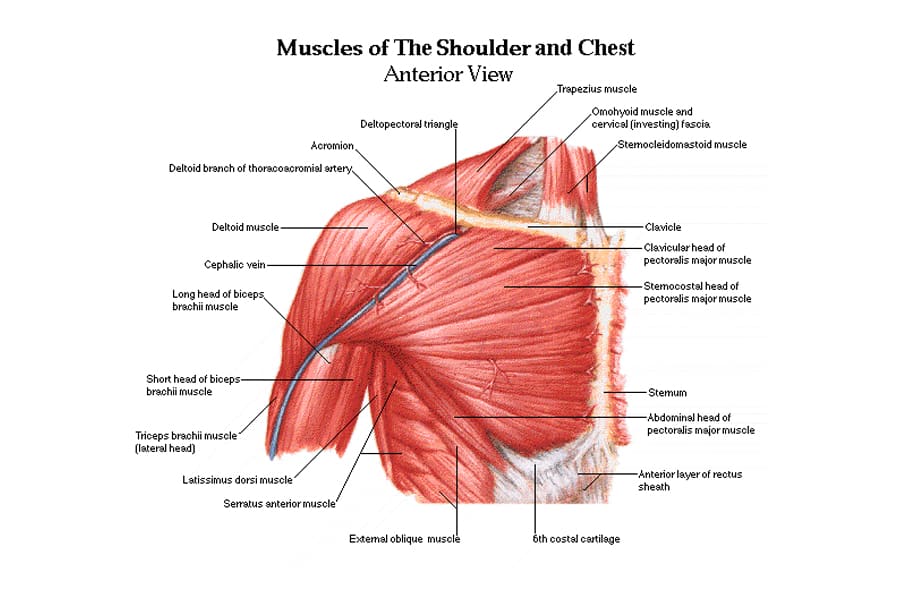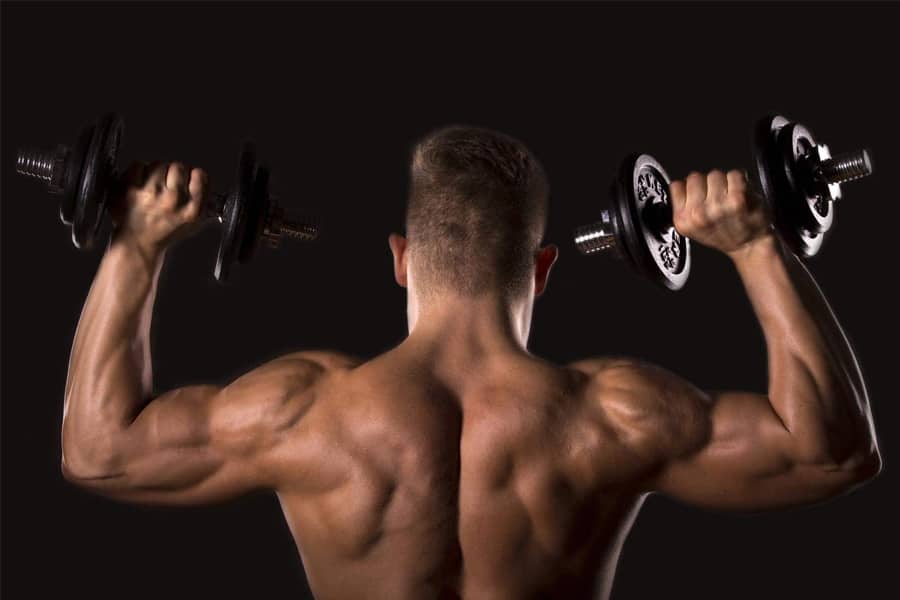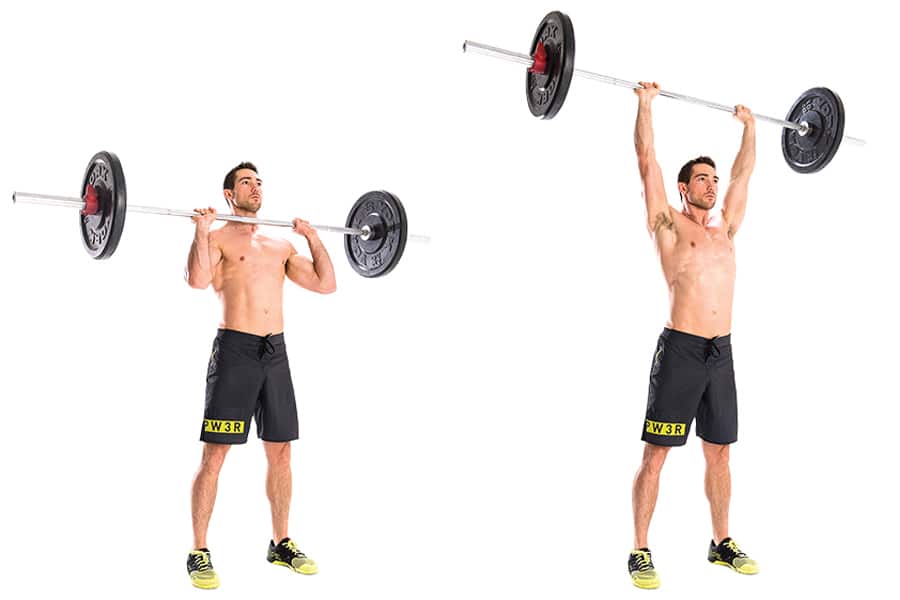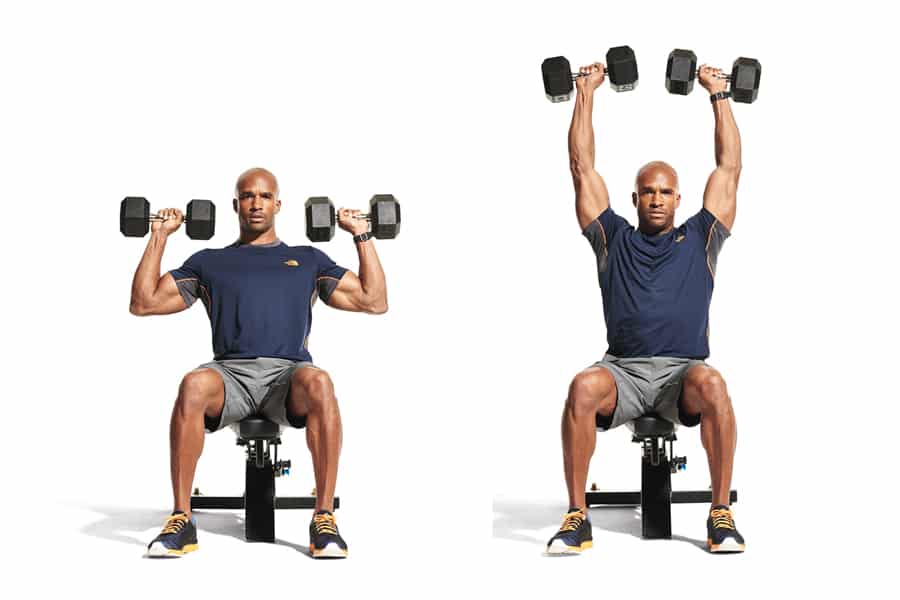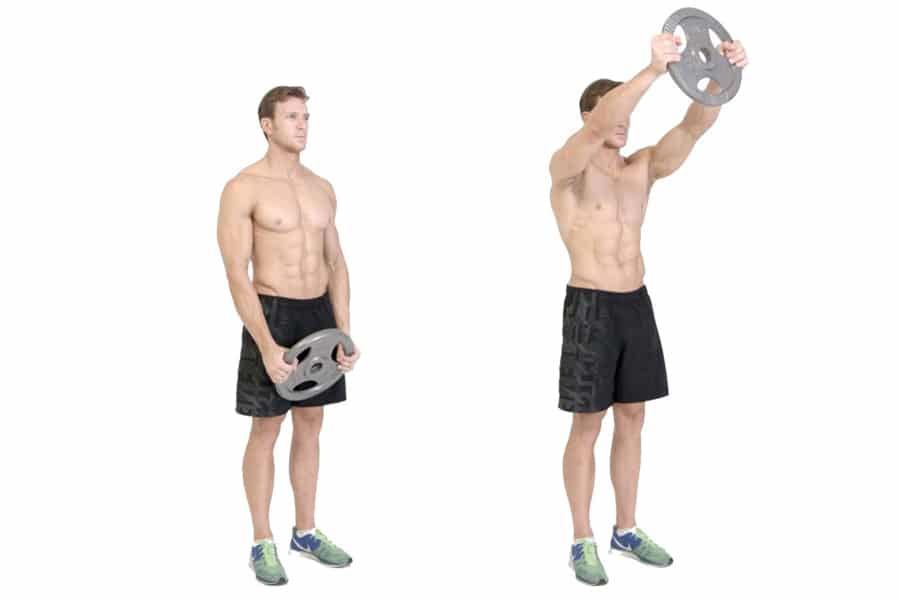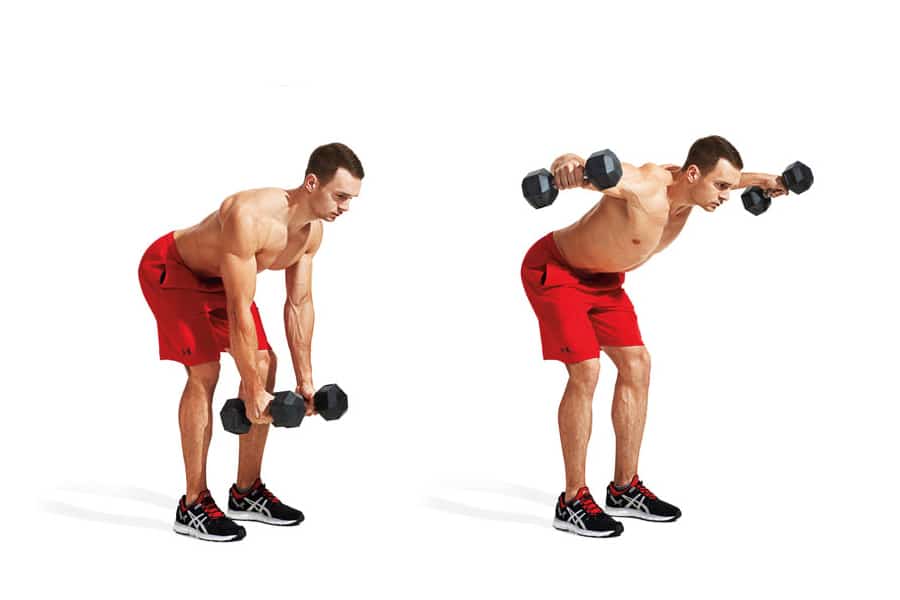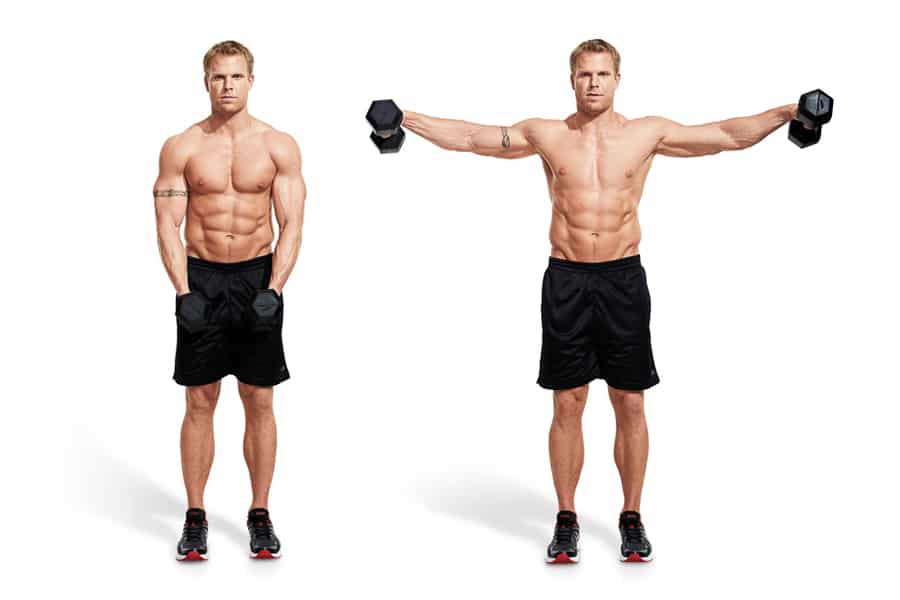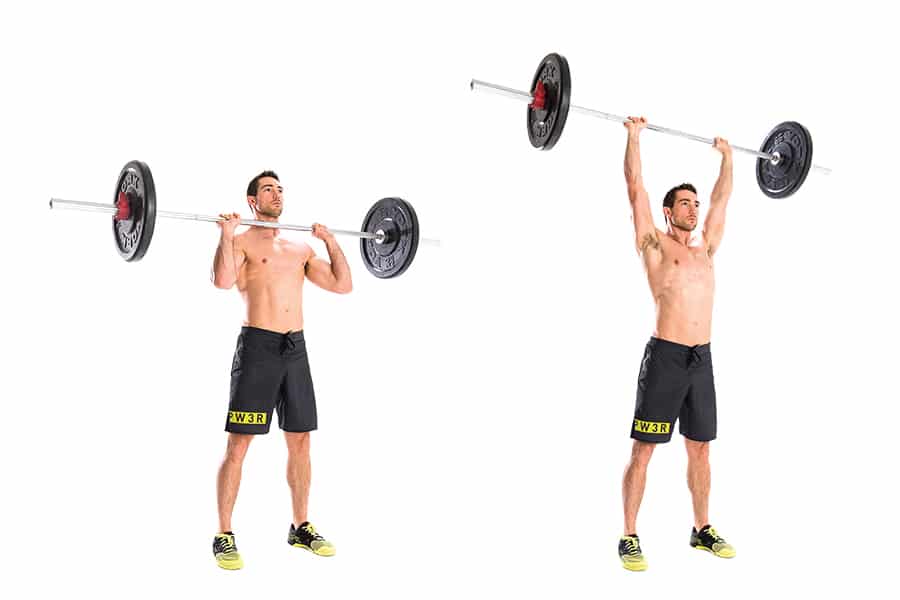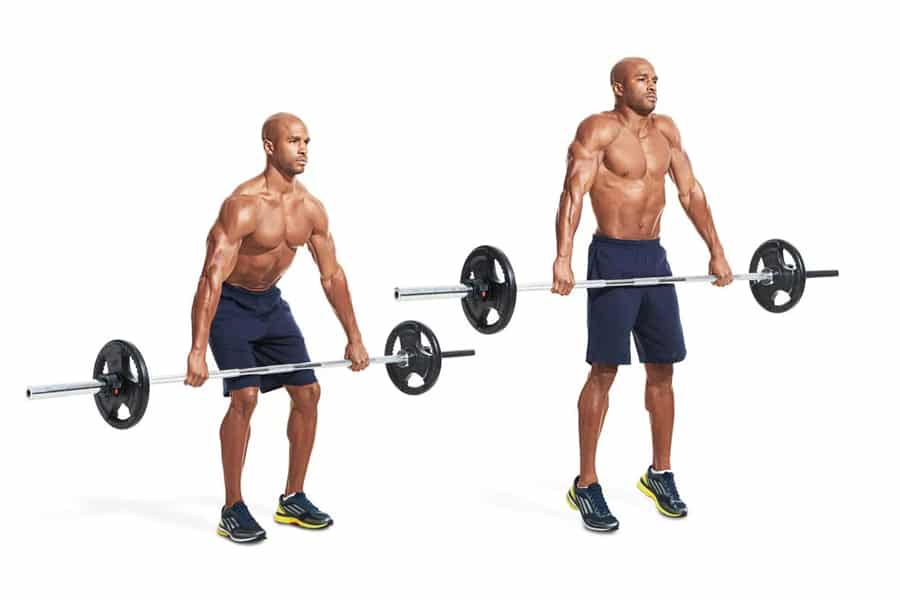Best Shoulder Exercises for Men
More than a fundamental component to a complete workout routine, the best shoulder exercises for men bring you one step closer to that desirable V-shape. Indeed, strengthening your delts gives the appearance of a slimmer waist while adding definition to your overall physique. Furthermore, studies have determined that the best shoulder exercises relieve pain and decrease the possibility of future dislocations. Of course, when all is said and done, you want a better body and that alone is enough reason to hop onboard.
Should you be new to a quality shoulder workout regimen, you’ll discover that these muscles develop rather quickly compared to other areas of your body. However, don’t take that to mean shoulder exercises are easy. On the contrary, a decent number of men dread shoulder day at the gym, as the workout can get quite intense…presuming you’re doing it properly. To ensure as much, we present the 10 best shoulder exercises for men. But first: what are shoulder muscles anyway?
What are Your Shoulder Muscles?
Your shoulder muscles break down into two separate groups: extrinsic muscles and intrinsic muscles. The former start at the torso and link to the shoulder bones, while the latter start above the upper torso (scapula, clavicle) and connect with the humerus. Within both of these respective groups, you have a range of specific muscles. They are as follows:
Extrinsic Shoulder Muscles
Trapezius
Shaped like a triangle (hence the name), this muscle runs down the spine and across the shoulder blade, supporting your arm and shoulder when you raise it. You have a trapezius muscle on both your left and right side.
Latissimus Dorsi
The name of this muscle translates to “broadest muscle in the back” and its physical structure duly abides. More commonly known as your “lat” muscle (because who wants to say latissimus dorsi?), it helps with the extension and internal rotation of each arm.
Levator Scapulae
As its name suggests, the levator scapulae muscle helps lift the scapula bone (shoulder bone), which connects the humerus (upper arm bone) and clavicle (collarbone).
Rhomboids
These rhombus-shaped muscles are primarily responsible for the retraction of the scapula. They’re located in the middle of your shoulder blades on your upper back, and divided between left and right.
Intrinsic Shoulder Muscles
Deltoids
Named for the Greek letter delta, this triangle-shaped muscle is located atop the shoulder. It breaks down into three main muscle fibres: anterior, middle, and posterior, which are all connected by way of a thick tendon. The very fact that shoulder exercises are more or less synonymous with working out your “delts” just goes to show how important this muscle actually is. Accordingly, your delts provide a foundation for things like arm rotation and injury prevention.
Teres Major
This small muscle runs from under the shoulder joint toward the back of the armpit. Due to its association with the latissimus dorsi, teres major has earned the nickname “lat’s little helper.”
Rotator Cuff
If you’re wondering why your upper arm bone doesn’t pop out of your shoulder socket on a regular basis, you have this group of muscles and tendons to thank. Unsurprisingly, rotator cuff muscles surround the shoulder joint.
10 Best Shoulder Exercises for Men
Now that we’ve gone all “Gray’s Anatomy” on your shoulder muscles, it’s time to put those same muscles to work. From dumbbell shoulder press workouts to reverse cable crossovers, you’ll find it all below. Just a quick note: if you’re looking to do a shoulder workout for mass, you’ll want to start each routine with the most intense exercises. Without further ado, here are the best shoulder exercises for men.
1. Barbell Overhead Shoulder Press
A barbell overhead shoulder press (aka barbell standing shoulder press) works not just your shoulders, but most of your body. That makes it a terrific core strengthener and mass builder, among other things. To start, put your feet at shoulder-width, and tighten your core as you hold a barbell at your shoulders, palms facing forward. Next, push the bar upward and squeeze your shoulder blades together at the peak. Lower steadily and carefully.
2. Seated Dumbbell Shoulder Press
A proper deltoid workout simply isn’t complete without the seated dumbbell shoulder press. In fact, some say this exercise routine is an entire deltoid regimen unto itself, targeting the anterior, lateral, and posterior deltoid muscles (with an emphasis on the middle delts). Meanwhile, lifting two separate dumbbells (as opposed to using a machine) prevents you from using one side of your body over the other, thereby retaining firmer balance and distribution. Naturally, a fair amount of coordination is required to pull this one off, especially when you increase the weights.
To perform a seated dumbbell shoulder press, sit on a low-back bench and hold a dumbbell in each hand at the shoulder level, palms facing forward. Keeping your head and spine perfectly straight, lift the dumbbells overhead toward one another, stopping just short of having them touch at the top. Hold the position for a few seconds and then carefully reverse course. Repeat.
3. Front Raise
You can use either a weight plate or barbell for this shoulder exercise, which targets the anterior delts. No matter what you decide to use, prepare for a seriously intense workout that brings no shortage of healthy pain. For that reason, don’t max out on the weight, as it will quickly turn healthy pain into unhealthy injury.
To execute, keep your hands at hip height as you hold the weight in front of you. Your feet should be even with your shoulders and your core should be tight. Next, retract your shoulder blades and keep your arms straight as you lift the weight to shoulder level. Breathe steadily and lower the weight carefully. Repeat.
4. Reverse Pec Deck Fly
This exercise targets your posterior delts and requires a pec deck machine. To start, face the machine, and position the seat so that the handles are at shoulder level on either side. Next, hold the handles with your palms facing inward. Tighten your torso and extend your arms out to the side, pushing through all the way. Responsibly return to the starting position. Repeat.
5. Bent-Over Dumbbell Lateral Raise
This wildly effective shoulder exercise targets your middle deltoids, though it also builds upon your overall physique. You can perform it in either a standing (bent-over) or seated position. Start with a dumbbell in each hand, keeping your chest up, your back flat, your knees slightly bent, and your eyes focussed toward a fixed point on the floor. Now, bend over until your core is basically parallel with the ground, and hang the dumbbells directly underneath you, all while keeping your elbows in a slightly bent position. Next, raise both dumbbells up and out to your sides, forming an arc until your upper arms are even with your torso. Take a brief pause at the top before lowering the dumbbells back into starting position. Repeat.
6. Dumbbell Lateral Raise
If you prefer a more traditional lateral raise, look no further than this one here. It likewise targets the middle deltoids and works wonders when executed properly. Start in the standing position, keeping your feet shoulder-width apart, your abs tight, your chest up, your head straight, and your shoulders pinched. Hold the dumbbells at either side, retaining a neutral grip.
Now, here comes the hard part. Using just your shoulders and arms, raise the dumbbells a notch above shoulder level, and hold for a few seconds. Lower the dumbbells back to the starting position, and repeat. Your elbows and hands should be moving together in harmony the entire time, and you should be maintaining a neutral, balanced position. If you find that your core or neck is shifting as you perform each rep (i.e. you’re utilising your body’s momentum), lower the weight accordingly.
7. Push Press
A staple of heavy-compound workouts, this shoulder exercise is not for novices. However, even the experts usually start light (sometimes using nothing but the bar), adding weight as they go along. Should you master this one, prepare for it to show virtually everywhere on your body.
The push press should be performed in the standing position. Start by resting the barbell atop your upper chest, with your palms up, your elbows pointed out, and your upper arms parallel to the floor. Lower your hips and bend your knees into a quarter squat and then rise upwards with ample thrust, fully extending your arms and elbows as you lift the bar over your head. Hold for a few seconds before returning to the starting position for the next rep.
8. Reverse Cable Crossover
You’ll need to attach D-handles to the upper pulley of two cable machines for this popular shoulder gym exercise. Grab the handle from the machine on your right using your left hand, and vice versa. Draw the cables in so that they form a cross on your chest, keeping your elbows fixed and your arms even with your shoulders. Slightly lean forward before lifting the weights on each respective machine in a cross-like fashion, stretching your arms as far as the cables go before bringing them in. If possible, increase the weight with each subsequent set.
9. One-Arm Cable Lateral Raise
Similar to the reverse cable crossover, this shoulder exercise targets the middle deltoid muscles and delivers ample tension. To start, stand sideways to the cable machine, keeping your feet shoulder-width apart. Using the hand that’s opposite the pulley, grab the D-handle. With your abs tight and your shoulders back, raise the cable using just the motion of your arms and shoulders. Take your arm just past shoulder level and hold for a few seconds before slowly returning to the original position. Repeat as necessary and then switch sides. Your hand and elbow should move in conjunction with one another the entire time.
10. Standing Barbell Shrugs
Save this neck and shoulder exercise for the end of your overall routine. Keeping your feet even with your shoulders, bend your knees and pick up the barbell, bringing it to waist level. Next, lift your shoulders up and back (i.e. “shrug” or pinch them), squeezing for about five seconds before releasing them. Keep the movements restricted to your shoulders, meaning your arms should be relatively loose and the barbell should only raise and lower very slightly.
You’ll also like:
Pelvic Floor Workout: The Best Kegel Exercise for Men
10 Best Core Exercises for Men
Chris Hemsworth’s Thor Diet & Workout Plan
10 Best Chest Exercises for Men

